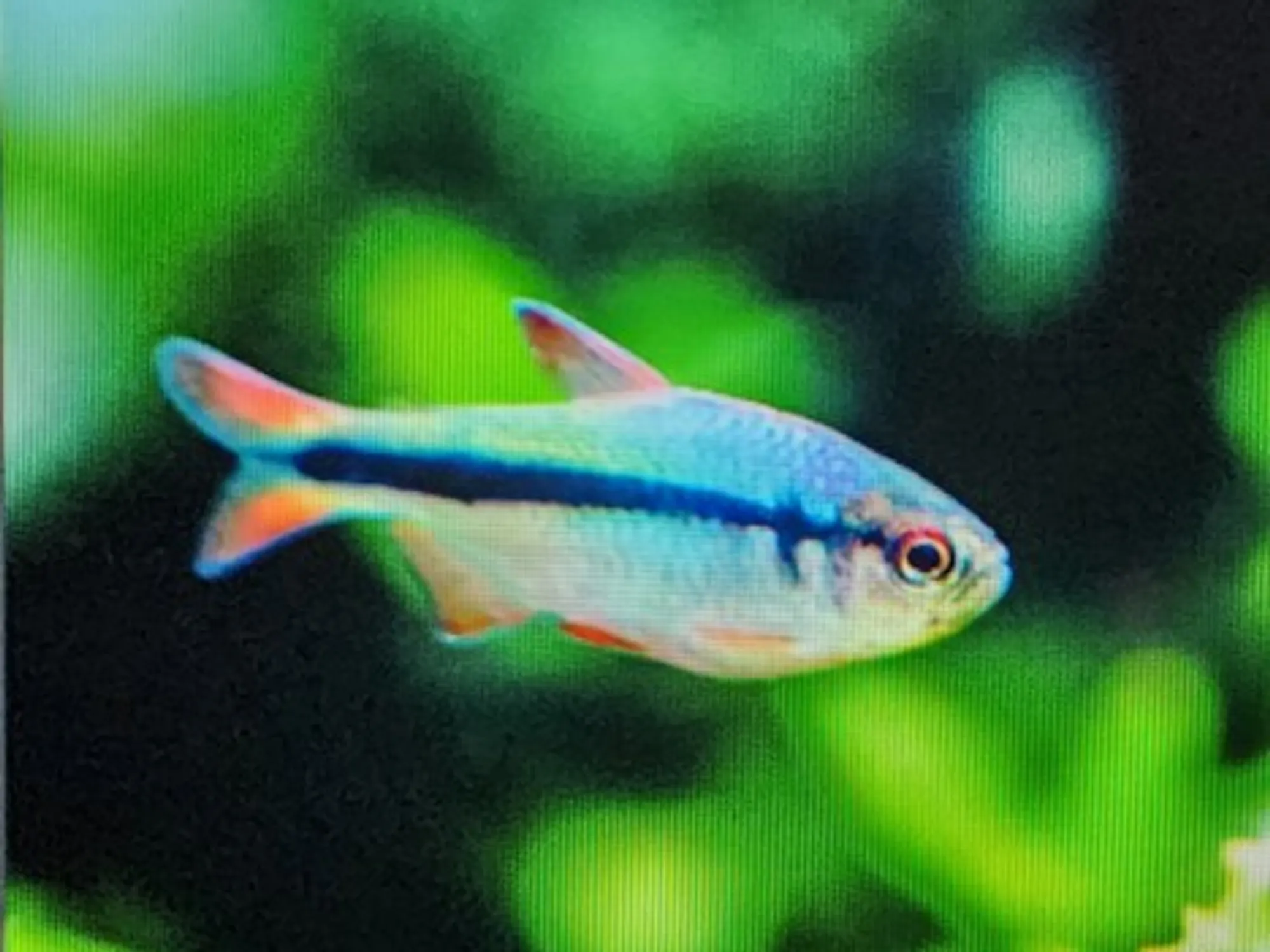Promoted


Unless otherwise stated, image is representative of species and not of actual product
Product Details

Size
2.5cm - 2.5cm

Temperament
Peaceful
Imperial Lapis Tetra
A stunning centerpiece for freshwater aquariums, the Imperial Lapis Tetra (Inpaichthys kerri) flaunts vibrant colors and a peaceful temperament, ideal for aquarists of all levels.
Detailed Description
Appearance:
- The Imperial Lapis Tetra, scientifically known as Inpaichthys kerri, is an eye-catching freshwater fish distinguished by its electric blue body and a subtle gradient of purple hues that run along its sides. Its iridescent coloration shimmers under aquarium lighting, making it a visually striking addition to any tank. The fish usually grows to about 4-5 cm (1.5-2 inches) in length, making it a perfect choice for community aquariums with other small, peaceful species. Male Imperial Lapis Tetras tend to be more vibrant than females, especially during mating displays.
Water Conditions:
- Temperature: The Imperial Lapis Tetra thrives in warm, tropical water conditions. The optimal water temperature should range between 24-28°C (75-82°F).
- pH Levels: A slightly acidic to neutral pH level is ideal for these tetras, with a preferred range of 6.0-7.5.
- Water Hardness: They are tolerant of soft to moderately hard water, with a hardness level between 5-12 dGH.
- Tank Size: Although they are relatively small fish, the Imperial Lapis Tetra is active and enjoys swimming in groups. A minimum tank size of 20 gallons is recommended to provide ample space for a school of 6 or more fish. This will help mimic their natural environment and reduce stress.
- Filtration and Water Movement: Moderate water flow with efficient filtration is ideal. They thrive in clean water, so regular water changes (20-25% weekly) are essential to maintain good water quality.
Tank Mates:
- Imperial Lapis Tetras are peaceful and do well in community tanks. Ideal tank mates include:
- Other peaceful tetras (e.g., Neon Tetras, Ember Tetras)
- Small rasboras
- Corydoras catfish
- Dwarf gouramis
- Harlequin rasboras
- Peaceful dwarf cichlids (e.g., Apistogramma)
- Avoid aggressive or fin-nipping species like larger cichlids, bettas, or barbs, as they can stress the Imperial Lapis Tetra. Keeping them in groups of at least 6-8 individuals ensures that they feel secure and can exhibit natural schooling behavior.
- Imperial Lapis Tetras are peaceful and do well in community tanks. Ideal tank mates include:
Feeding Habits:
- In their natural habitat, Imperial Lapis Tetras are omnivores, feeding on small invertebrates, insects, and plant matter. In captivity, they have a flexible diet and will readily accept a variety of foods:
- High-quality flakes or pellets formulated for tetras
- Frozen or live foods such as daphnia, bloodworms, and brine shrimp
- Vegetable-based foods, including blanched spinach or spirulina, to promote their overall health
- Feed them twice a day with portions they can consume within 2-3 minutes. Offering a varied diet ensures vibrant colors and optimal health.
- In their natural habitat, Imperial Lapis Tetras are omnivores, feeding on small invertebrates, insects, and plant matter. In captivity, they have a flexible diet and will readily accept a variety of foods:
Care and Maintenance:
- Imperial Lapis Tetras are relatively hardy, making them suitable for beginner to intermediate aquarists. However, they do require stable water parameters and a well-maintained environment to thrive.
- Tank Setup: A densely planted aquarium with live plants like Java moss, Amazon swords, or anubias is ideal, as it mimics their natural habitat. The addition of driftwood and rocks can provide hiding spots and add to the natural aesthetic of the tank.
- Lighting: These fish do not have high lighting requirements, but moderate lighting will enhance their colors. Be mindful that too much light can cause stress, so it’s important to provide areas of shade using floating plants or decorations.
- Behavior: Imperial Lapis Tetras are peaceful and enjoy swimming in the middle to upper levels of the tank. They are social fish and thrive best in groups, where they can exhibit schooling behavior and feel secure.
- Health Care: Like all aquarium fish, they can be susceptible to diseases such as ich and fin rot. Keeping water conditions stable, maintaining good water quality, and offering a balanced diet are key to preventing health issues. Quarantine any new fish before adding them to the main tank to avoid introducing diseases.
- Imperial Lapis Tetras are relatively hardy, making them suitable for beginner to intermediate aquarists. However, they do require stable water parameters and a well-maintained environment to thrive.
Breeding:
- Breeding Imperial Lapis Tetras in a home aquarium is possible but requires specific conditions. These fish are egg layers, and a separate breeding tank may be needed to increase the chances of success.
- Breeding Tank Setup: A small tank with soft, slightly acidic water and a temperature around 26°C (79°F) is ideal. Fine-leaved plants or a spawning mop will give the female a place to scatter her eggs.
- Mating Behavior: Males display brighter colors to attract females. Once the eggs are laid, parents should be removed from the breeding tank to prevent them from eating the eggs. The eggs typically hatch in 24-48 hours, and the fry can be fed infusoria or finely crushed flake food once they are free-swimming.
- Breeding Imperial Lapis Tetras in a home aquarium is possible but requires specific conditions. These fish are egg layers, and a separate breeding tank may be needed to increase the chances of success.
Imperial lapis tetra 2.5cm
Product Options
1pc
5pcs
10pcs
Delivery
Quantity
 FishList by DesmondLim Teck Whye
FishList by DesmondLim Teck Whye Visit shop
Aquarium Fishes, Tanks & Supplies From FishList by DesmondLim Teck Whye


 SG
SG



